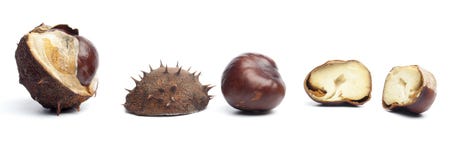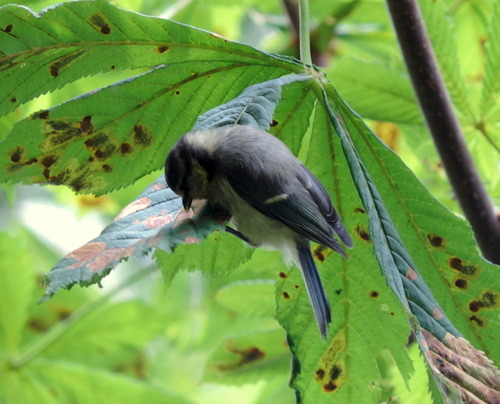
Stock from dreamstime.com
Amusingly, my nieces have also picked up this habit. Maybe it runs in the family. I don't think I should be quite as relieved that I'm not the only one to come home with pockets rammed with conkers when they're nine and four.
It is quite noticeable that conkers have been getting smaller over the years though. While you can still get substantial conkers that'll definitely win a game, most of them just aren't the size they used to be- the result of a few nasty diseases that have spread through the UK since 2000. One of the most uncommon, unsightly problems is the horse chestnut leaf miner.

Image from Naturespot.co.uk
This beastie (Cameraria ohridella) arrived in the UK in 2002, and has spread across pretty much the whole country since then. It's still thankfully rare in Scotland, but has become very prevalent in some parts of the country; the rate of infestation is around 40-60km per year, so it's a real threat to large parts of the country that aren't currently affected (Forestry.gov.uk, 2014). Often horse chestnuts are the first trees to take on the golden reddy colours of autumn, or look like they do from the sheer number of leaf mining burrows across their canopy.

Image from Devonmoths.org.uk
Although this obviously looks unhealthy, so far there doesn't seem to be much evidence for the moths having a detrimental effect on the trees- there are much more dangerous diseases like bleeding canker. Obviously the presence of leaf miners when other diseases attack contribute to failing health of a plant though. Going back to the conkers, smaller ones are less likely to germinate successfully. Thankfully birds are starting to learn to use the leaf miners as food though, acting as natural pest controllers to these invaders.

Image from mostlyscarce.tumblr.com
Read more about horse chestnut diseases at ConkerScience!
No comments:
Post a Comment